Nestled in the southwestern corner of Pakistan, Balochistan is a province that boasts not only a rich cultural heritage but also an array of breathtaking natural wonders. From rugged mountain ranges to serene coastal shores, Balochistan is a treasure trove of hidden gems waiting to be explored. In this article, we will embark on a virtual journey through the top 10 amazing places in Balochistan that you absolutely need to see. Whether you are an adventure seeker, a history enthusiast, or simply someone seeking tranquility in nature’s embrace, Balochistan has something extraordinary to offer. So, fasten your seatbelts as we prepare to unveil the enchanting beauty of these remarkable places in Balochistan.
Balochistan: Where History, Culture, and Geography Unite
Balochistan, situated in the southwestern part of the country, is the largest province of Pakistan. It comprises three major regions: Mekran, Kalat, and Lasbela. Different civilizations have influenced Balochistan’s unique culture and history throughout time. The region is home to a diverse range of ethnic groups, languages, religions, customs, cultures and even physical landscapes that are quite distinct from each other.
The people of Balochistan are proud of their cultural heritage as well as their natural resources such as oil and gas reserves located in its northern regions. This resource has allowed them to benefit economically through its development projects such as Gwadar Port which serves mainly to facilitate trade with China.
Before jumping on to the top amazing places in Balochistan you need to add to your visiting list, let us first discuss the history, culture, and geography of Balochistan, which will help you better plan your trip to the province.
History of Balochistan

Balochistan is an ancient region, located in the south-western part of Pakistan. Its history dates back to antiquity and it has gone through numerous changes over time. Balochistan was once a major centre of the ancient Indus Valley Civilization, and its archaeological sites were witness to the rise and fall of many great empires.
In the 3rd century BC, Alexander the Great conquered much of present-day Balochistan, paving the way for subsequent Greek rule in this area. Various Persian and Turko-Mongol dynasties ruled it during medieval times before the British ultimately gained control of it in 1876. After independence from Britain in 1947, Balochistan became an integral part of Pakistan as a province within a new nation. Recently, numerous infrastructure projects have rapidly driven social and economic development throughout the region.
Geography of Balochistan
Balochistan is a large and beautiful region on the western part of Pakistan. It has a diverse geography, consisting of mountains, plateaus, deserts, and coastal regions. Balochistan’s geography plays an important role in its culture, economy, and politics.
The mountains of Balochistan are the highest in Pakistan and are home to several ancient fortresses. The Bolan Pass connects Quetta with Afghanistan through the Suleiman Mountains range. Plateaus dominate much of the east part of Balochistan including most of Khuzdar district and Chagai hills which form an important boundary between Iran and Pakistan. Sparsely populated deserts such as Kharan Desert occupy significant land area along with Makran Coastal Plain – long strip of coastal plains along Arabian Sea from Karachi to Iranian border that have historically been attractive areas for trade.
Culture & People of Balochistan
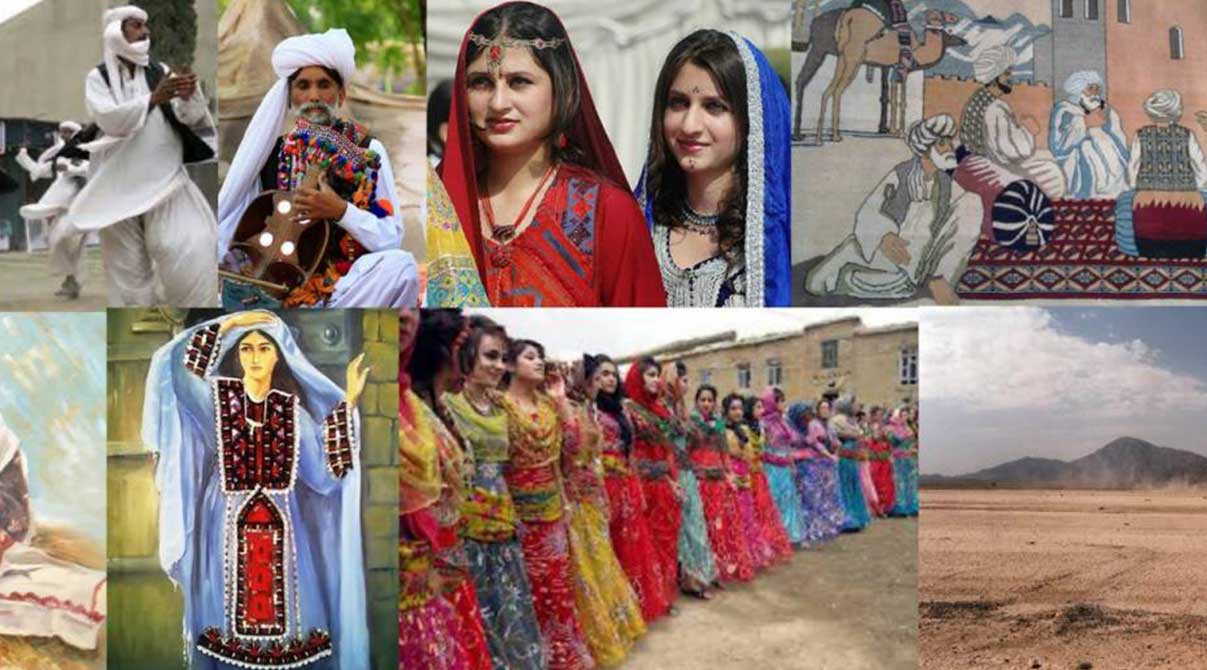
With its centuries-old history, the people of Balochistan reflect the richness found in each culture present within it. Along with its ever-changing landscapes, Balochistan has remained a land rich in culture and tradition since ancient times.
The main ethnic group of Balochistan are the Baluchis, who account for over half of the population with their unique language and customs. Other ethnicities include Sindhis, Pashtuns, Brahui, Hazaras and Makrani peoples. Each group has their own cultural practices such as music, dance and art forms that they have passed down through generations. Additionally, there are also several religious denominations present in Balochistan including Islam, Hinduism and Christianity which coexist peacefully together.
Related: Top 10 Historical Places of Pakistan
Tourism in Balochistan
Balochistan is an incredible province offering travelers with stunning natural beauty and a rich cultural heritage. Many tourists still haven’t explored the region’s rugged terrain, magnificent mountains, vast deserts, and pristine beaches. Balochistan shares borders with Afghanistan to the north and west, Iran to the southwest, and the Arabian Sea to the south.
Tourism in Balochistan has experienced significant growth over the past few years as more visitors discover this hidden gem of Pakistan. The region boasts several historical sites such as ancient fortresses that remind us of its rich history dating back to pre-Islamic times. Additionally, there are several other attractions like the Hingol National Park which offers a unique blend of wildlife and nature conservation opportunities.
Natural Beauty
Balochistan is a land of natural beauty and cultural diversity. The province has everything that can attract tourists from all over the world – from the highest peaks to the vast deserts, from pristine beaches to lush green valleys. Balochistan is an ideal destination for nature lovers and adventure seekers.
One of the main attractions of Balochistan is its stunning landscapes. The province has some of the highest peaks in Pakistan such as Loai Saar Naikan and Zarghun Ghar. These peaks are popular among mountaineers who come here to test their skills and endurance. Moreover, Balochistan has some of the most beautiful beaches in Pakistan such as Gwadar Beach and Ormara Beach which attract tourists from all over the country. In addition, there are several lakes and rivers that add more charm to this natural wonderland.
Coastal Areas
Balochistan is also home to some of the most breathtaking coastal areas in the country. The tourism industry in Balochistan has been steadily growing over the years as more travelers are discovering the hidden gems that this beautiful province has to offer. From pristine beaches to rugged mountains and ancient ruins, Balochistan offers a diverse range of attractions for tourists.
One of the main draws for tourists visiting Balochistan is its stunning coastline. With over 700 kilometers of unspoiled beaches, visitors can enjoy everything from swimming and sunbathing to fishing and boating. Guided tours or even certain beach resorts offer opportunities to observe a variety of marine life such as dolphins, whales, and sea turtles in the coastal areas.
Historical Sites
The province is home to a number of historical sites that attract tourists from all over the world. These sites are not only significant because of their historical importance, but also because they provide an insight into the diverse cultures that have shaped Balochistan over centuries.
One such site is the ancient city of Turbat, located in the southern part of Balochistan. This city dates back to 3000 BC and was once known as Kurnaish. It was an important center for trade between East and West Asia and played a vital role in shaping the cultural identity of Balochistan. Today, visitors can explore its ruins including temples, tombs, and other structures that offer glimpses into its past.
Related: Australian Journalist Melinda Feels ‘Welcomed’ as She Visits Famous Places in Pakistan
Top 10 Amazing Places in Balochistan You Need to See
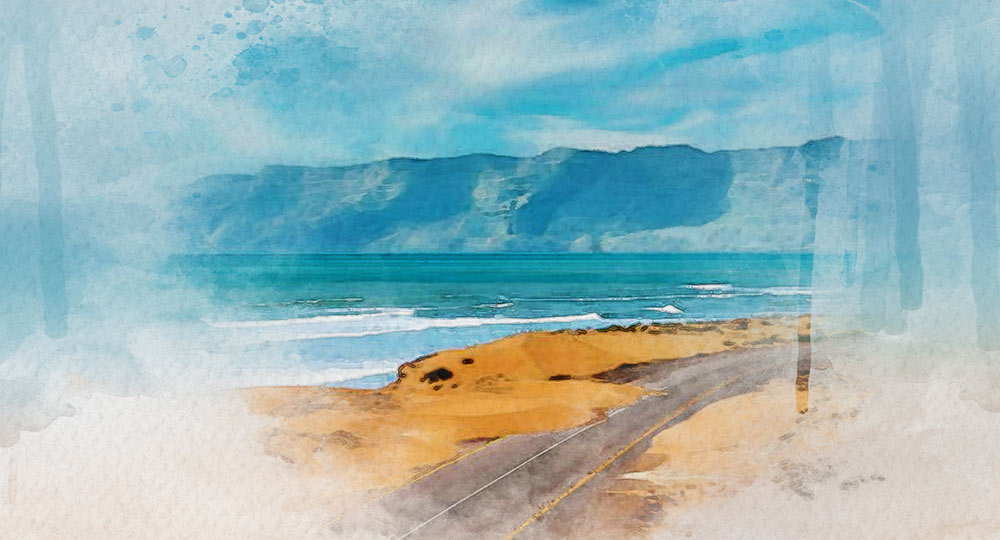
The Balochistan province of Pakistan boasts picturesque landscapes, diverse culture, and breathtaking natural beauty. From the mesmerizing Makran coast to the scenic mountains of Ziarat, Balochistan has something for everyone. Here are the top 10 amazing places in Balochistan that you need to see:
1. Quaid-e-Azam Residency
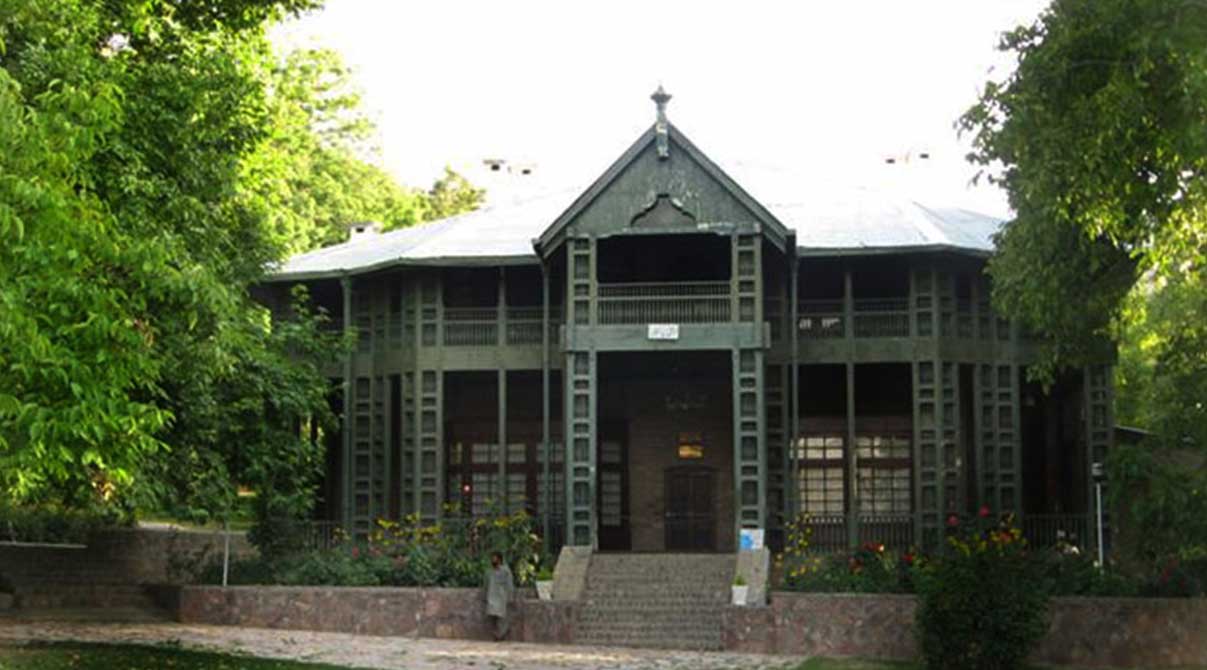
Quaid-e-Azam Residency is a historic site located in the city of Ziarat. In 1892, they built the residency, and it served as the summer residence of Quaid-e-Azam Mohammad Ali Jinnah, the founder of Pakistan, during the last days of his life. It is a symbol of national heritage and attracts visitors from all over Pakistan and beyond.
The residence has an 8000 square foot footprint. It’s the most notable landmark in the city. Magnificent woodwork adorns the framework of the building, and lush green gardens envelop it on all sides, creating a breathtaking scene. With a massive central wooden staircase and huge windows that let natural light into the house from all sides, it has a homely British cottage feel. There are five bedrooms in the residence, and there is also a wide hall that serves as the dining room. Via the balcony of the residence, one can see the captivating valley.
Ziarat Residency is another name for Quaid-e-Azam Residency. The stunning wooden residence building was first intended to serve as a sanatorium. Due to its high significance and qualities, the residency is one of the World Heritage Sites.
2. Pir Ghaib Waterfalls
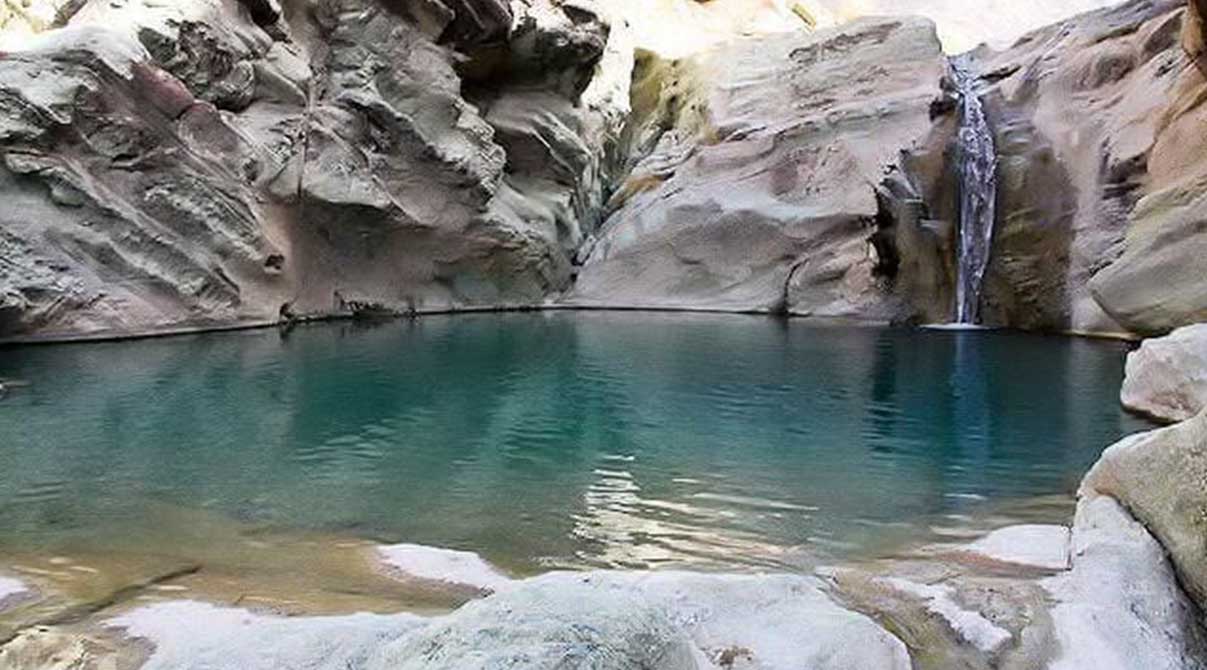
Pir Ghaib Waterfalls, located in Bolan valley, Balochistan is a hidden gem that is still relatively unknown to the world. Situated just 70 kilometers away from Quetta, the waterfalls make a perfect destination for tourists seeking to escape the city’s hustle and bustle. As visitors approach the waterfall, rocky mountainsides greet them, offering breathtaking views of the surrounding area.
The Pir Ghaib Waterfall makes its way through streams, ponds, and palm trees before finally cascading down into a pool at the bottom. Visitors can take a dip in the cool waters or simply sit back and relax while enjoying nature’s beauty. The sound of falling water creates an atmosphere of tranquility which makes this place perfect for anyone who wants to unwind from their daily routine.
According to legend, in the early days of Islam, Pir Ghaib along his sister, the renowned Bibi Nani, came to this location to convert the inhabitants. Yet the worshippers of fire despatched an army to pursue the religious couple. The siblings split up in the Bolan Gorge; Bibi Nani proceeded down the canyon (her alleged grave is underneath a bridge about 15 km downstream), and her brother ran away into this desolate area with the army chasing after him. When he realized he was trapped by the rock wall at the entrance of the gorge, the saint begged the Almighty for help. He cut the rock to accommodate the holy man. As a result, people henceforth referred to him as Pir Ghaib, The Invisible Saint.
3. Moola Chotok
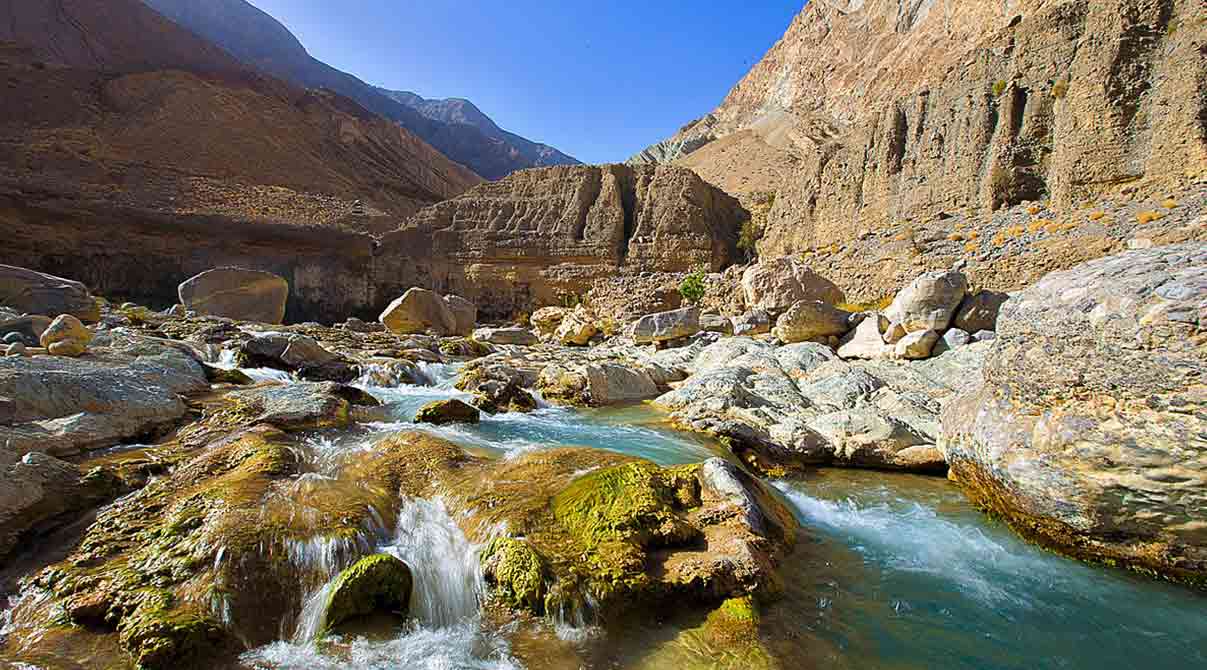
In the Khuzdar District of Pakistan’s southern region of Balochistan, a secret ravine known as Moola Chotok exists. High rocks surround the cascading waterfall widely known as Chotok, making it one of the largest waterfalls in Sub Tehsil Moola. Its historic and geographical significance lies in its role as the entry point connecting west and central Balochistan, Sindh, and Iran.
This route offers the shortest travel across central Balochistan and Sindh (Moola Pass). Thorekhear, Hatachi, Hayrav, Kial Beig, and Pasta Khan’s ancient ruins provide evidence that Moola Chotok belonged to this 2,000-year-old civilization. The district of Khuzdar gives rise to the river known as Moola Chotok, which is located in Jalawan.
The place has become increasingly popular among tourists due to its natural beauty and unique features. Moola Chotok boasts crystal-clear water streams, cascading waterfalls, towering cliffs, and lush green valleys. The highlight of Moola Chotok is the natural pool formed by the waterfall. Tourists can swim in the cool waters while enjoying the view of surrounding cliffs and mountains. The pool also offers an excellent opportunity for trekking enthusiasts to explore the nearby hills and caves. In addition to that, visitors can also enjoy camping near the waterfall with their friends and family.
4. Hanna Jheel

17 km to the east of Quetta City, amid the hills near where the Urak Valley begins, located Hanna Lake. During the British Colonialism era, local tribesmen built the reservoir in 1894, making it one of the city’s top highlights. Between two mountains, it creates a grand historical bridge wall with the depths resembling a castle’s battlements for the purpose of retaining water. Hanna Lake can hold up to 220 million barrels of water and is located on 818 acres of land.
One of Balochistan’s most popular and easily reachable lakes is Hanna Lake. A lakeside eatery with picnic tables, sheltered by pine trees near the river’s end, offers families the opportunity to savor the cuisine and weather. The Hayat Durrani Water Sports Academy (HDWSA), located on the eastern bank of the lake, is the earliest and sole institute in Balochistan Province that offers rowing, canoeing, kayaking, and sailing training, as well as organizing competitions. The academy also provides facilities for rough swimming.
Related: Top 15 Best Places in Pakistan That You Need to Visit
5. Hingol National Park
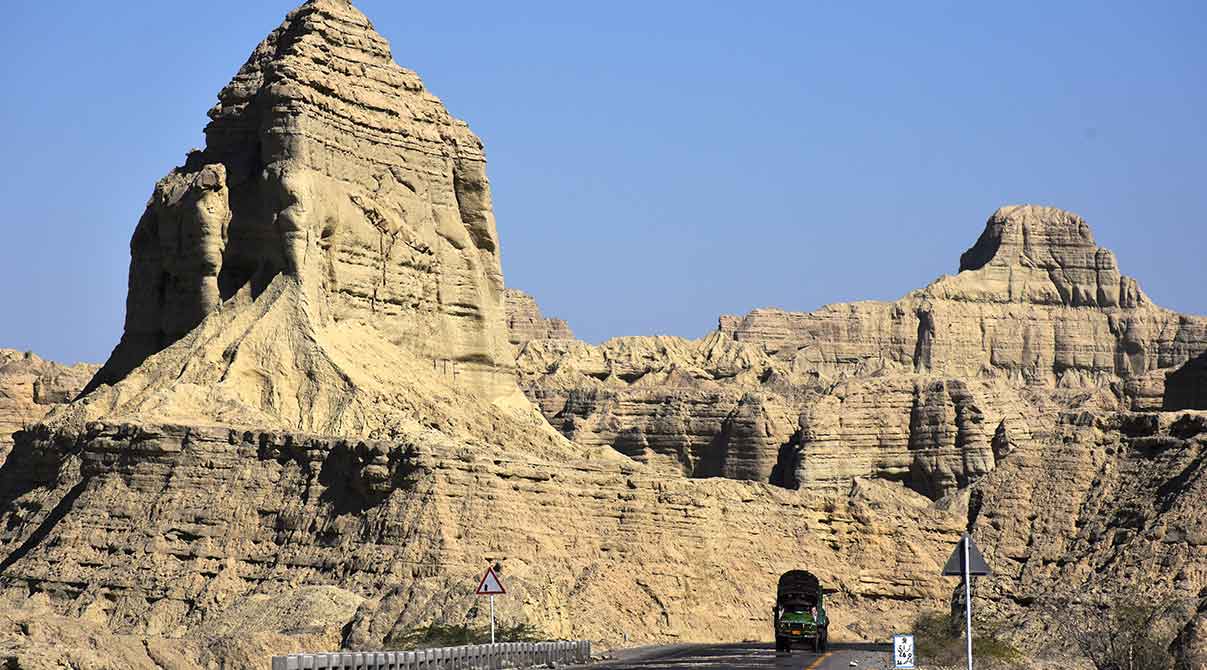
Hingol National Park, the largest national park in Pakistan, stretches along the Makran coast. The park covers approximately 6,100 km² (2,400 sq mi) and is located in the three Balochistan districts of Gwadar, Lasbela, and Awaran. Karachi is located 190 kilometers away.
In 1988, Hingol was designated as a national park. The park bears the name of the southern section of the Hangul River, which flows alongside the Arabian Sea’s coasts and is home to a vast population of birds and a diverse array of marine species. Hangul National Park is unique among Pakistan’s national parks in that it has six diverse ecosystems, as well as desert and plains regions.
The Hangul River tributary, that is the breeding ground for hundreds of migratory birds and marsh crocodiles, and a rocky mountain range form the park’s northern and southern boundaries. The Makran Coastal Highway, constructed in 2004, is the park’s distinctive rock formations and has been drawing visitors from all across the nation.
In Pakistan, Hangul National Park serves as a natural haven for species on the verge of extinction. Over 257 plant plus 289 animal species, along with hundreds of rare species, live there, ranging from mammals to migratory birds. Various locations reportedly host over 60 crocodiles, with marsh crocodiles often spotted on the beach adjacent to Hangul National Park.
6. Kund Malir Beach
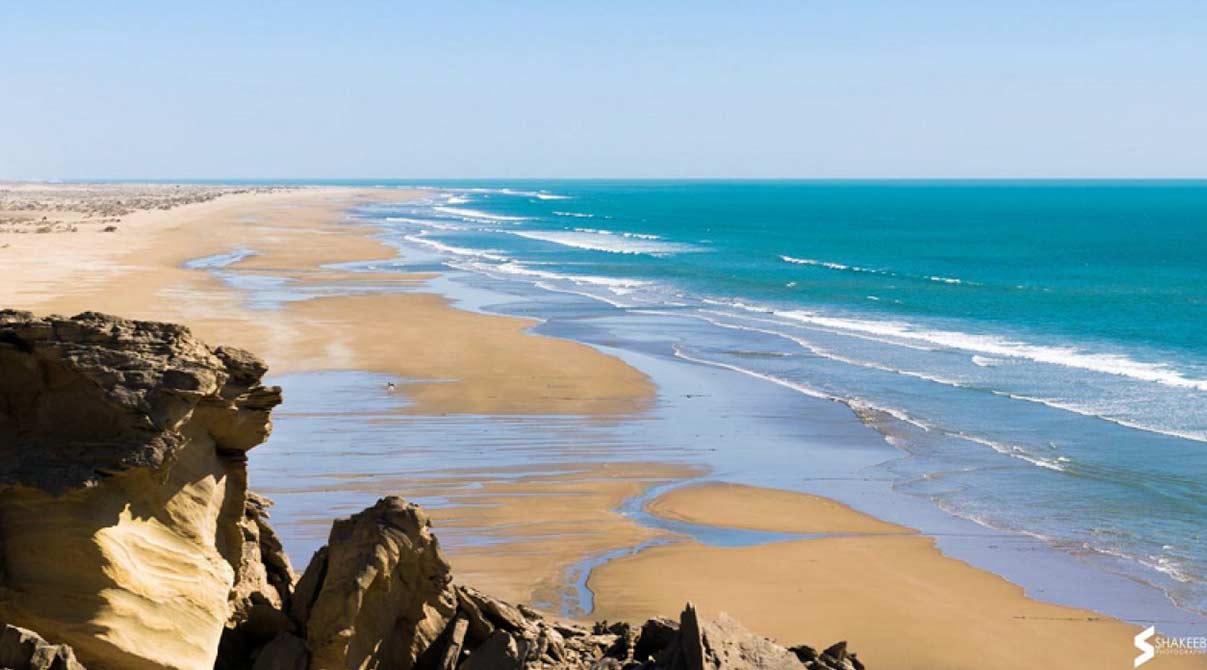
Situated at Hingol National Park, in Balochistan, Pakistan, Kund Malir is a beach roughly 150 km from Zero-Point on the Makran Coastal Highway. It is situated 147.1 km west of Karachi. The route from Kund Malir to Ormara is regarded as picturesque. The region is a component of Pakistan’s largest national park, Hingol National Park.
A small Baloch fishing community known as Kund Malir perches on a hill overlooking the ocean. The sea waves over the white sand and the blue ocean draw in passersby. Last year, Kund Malir earned a place among the top 50 beaches in Asia, considering both tourism and photography when creating this rating. Moreover, since the water isn’t much deeper here than at the well-known beaches of Hawke’s Bay, Mubarak Village, and Kaka Pir, both ladies and children plunge into the ocean floor.
You can find a hotel nearby where food is available at reasonable prices. However, finding drinking water at Kund Malir might be difficult for most tourists. The majority of visitors to Kund Malir come for a “day vacation,” although others choose to stay overnight on the beach. In relation to this, some shelters have also been built along the coast which range from highly expensive to reasonable ones.
The Balochistan government also made the decision to construct a resort atop Kund Malir, although neither a hospital nor a rescue facility are located there. The clear lake and unpolluted surroundings are quite beautiful here.
7. Pir Chattal Noorani Gandhawa

Pir Chattal Noorani Gandhawa is a mystical oasis located in Jhal Magsi, Balochistan. The oasis is considered a paradise on earth by many visitors due to its amazing beauty and breathtaking surroundings. However, what most people don’t know is that this remarkable place has a secretive story behind it.
Pir Chattal Noorani Gandhawa is a hidden gem in the heart of Pakistan. This oasis has been home to thousands of fishes for centuries, reaching up to 2 feet long! Despite its abundance of marine life, the locals have never hunted or fished in this area. But why? The site has become famous because of its unique belief system, where people believe that if they harm or eat the fish living in the oasis, they will suffer a painful and embarrassing death. The legend behind this belief adds an air of mystery to the already intriguing site. Legend has it that if someone eats them, the fish will become the cause of his death and the fish will come out alive. Unbelievable, right?
Today, Pir Chattal Noorani Gandhawa remains a popular destination for tourists looking to escape the hustle and bustle of city life.
8. Astola Island

The deserted Pakistani island of Astola, popularly known as the “Island of the Seven Hills,” is located in the Arabian Sea, 25 km south of the nearest point of land and 39 km southeast of the fishing town of Pasni. Spanning roughly 6.7 km in length and covering an area of approximately 6.7 km2, Astola stands as the largest offshore island in Pakistan. Administratively, it falls under the Pasni subdistrict of the Balochistan province’s Gwadar District. To reach Astola, motorized boats departing from Pasni offer access, and the journey typically takes around 5 hours in total.
The island is made up of a sizable plateau that is slanted and seven little hillocks that have deep chasms and fissures a few feet wide (thus the indigenous name “Haft Talar” meaning “Seven Hills”). The island contains a number of natural caves and coves. The island’s north side is cliff-like with a steep vertical drop, whilst the south face dips off gradually.
A number of Astola’s endemic living types have survived thanks to isolation. Hawksbill turtles (Eretmochelys imbracata) and endangered green turtles (Chelonia mydas) lay their eggs on the beach below the cliffs. Moreover, the island is a crucial habitat for unique reptiles such the Astola viper (Echis carinatus astolae). Many water birds, including coursers, curlews, godwit, gulls, plovers, and sanderling, are said to breed on the island.
Every year, between the months of October and May, fisherman from the mainland temporarily establish themselves on Astola to harvest lobsters and oysters. The island is unoccupied from June to August since it is not a good time for fishing, the seas are rough, and the tides are high.
Related: The Most Beautiful Places in Skardu You Can’t Miss This Summer
9. Mehrgarh
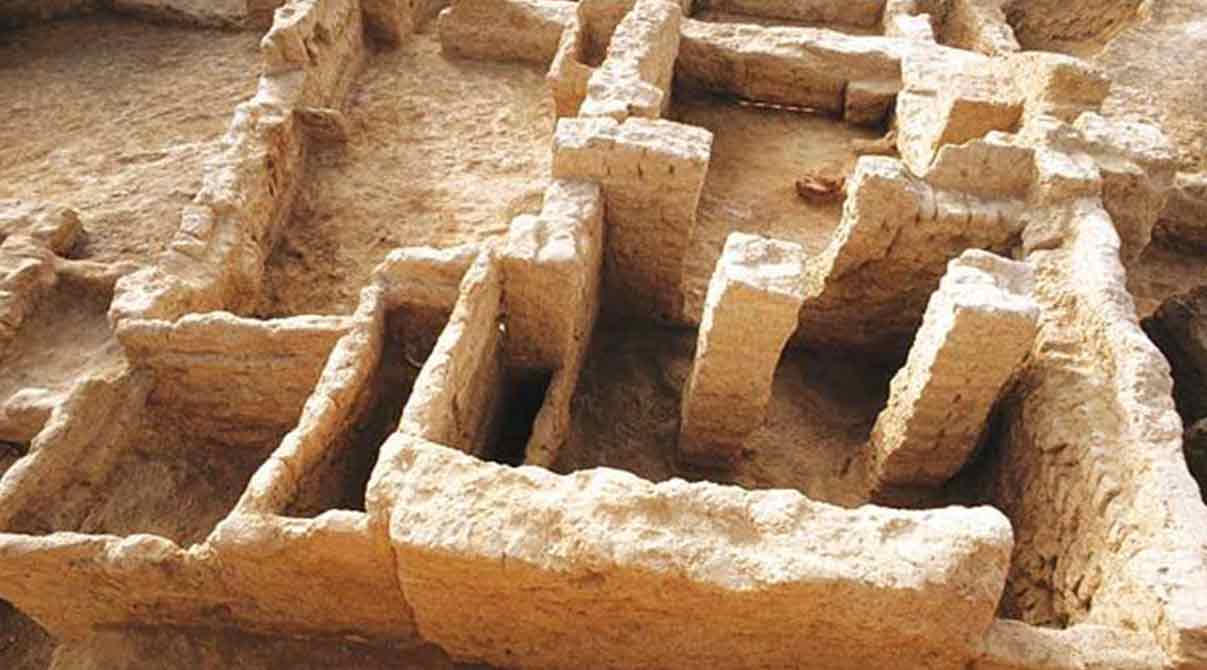
In the Kacchi Plain of Balochistan in Pakistan, Mehrgarh is a Neolithic archaeological site that dates from about 7000 and 2500/2000 BCE. Between the Pakistani cities of Quetta, Kalat, and Sibi, it is situated close to the Bolan Pass, to the west of the Indus River. An archaeological team headed by French experts found the site in 1974.
The archaeological deposits, spanning approximately 250 hectares, are mostly deeply buried beneath alluvium buildups. However, in some places, ‘in situ’ buildings can be seen degrading on the surface. Moreover, the site’s currently visible excavated remains encompass a collection of sizable compartmental mud-brick buildings, mounds, and a few formal cemeteries. Notably, some of these cemeteries have had portions excavated.
The Mehrgarh culture, considered the birthplace of the Indus Civilization, played a crucial role in the Neolithic revolution. Significantly, Mehrgarh also functioned as a crossroads for trade and commerce along one of the earliest trading routes. This revered and well-known heritage site, dating back 9,000 years, stands as a testament to Pakistan’s pride in the history of human civilization.
10. Koh-i-Chiltan
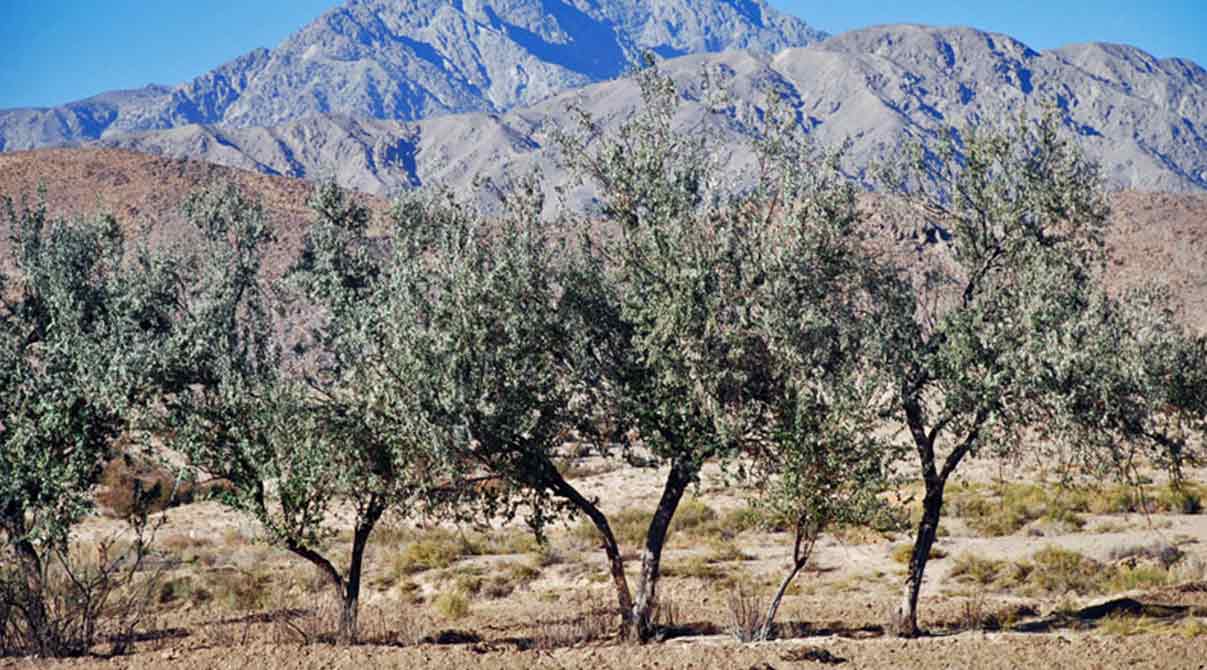
In the southwestern region of Quetta, approximately 20 km south of the city, lies the imposing purple peak known as Chiltan, soaring 3,308 meters above sea level. The local Brahui people residing in its shadow affectionately call it “Chehel Tan,” which translates to Forty Souls, a name steeped in legend. According to the folklore, a Brahui shepherd and his wife, despite years of marriage, remained childless until they were blessed by God with an astonishing forty children. Overwhelmed by the responsibility, the couple decided to keep only one child and left the rest in the Hazarganji forest.
As time passed, rumors circulated about elfin children dwelling in the mystical ravines, luring travelers into the woods. Those who attempted to chase them were forever lost in the uncharted depths of Hazarganji, as these elusive beings were impossible to catch. Determined to bring back their abandoned offspring, the shepherd ventured into the wilderness with his last remaining child. However, the forest pixies outwitted the old man, taking away their final sibling and disappearing into the woods, never to be seen again, now remembered as ghosts. Consequently, the peak earned its name, Chehel Tan.
Despite its arid surroundings and limited rainfall, the mountain’s contours are teeming with diverse plant and animal life. Wild olive, pistachio, and acacia trees flourish alongside a plethora of herbs, grasses, and wildflowers. Here, the enigmatic Chiltan markhor, believed to be a cross between a true markhor and a wild sheep, roam. Among the rocky terrain, rodents skulk, while partridges and various other birds make their presence known from the lush bushes. Chiltan’s fragile ecosystem is a testament to the resilience of life in a harsh environment.
Challenges Faced by Tourists in Balochistan
Balochistan is a beautiful province of Pakistan, known for its rugged mountains, sprawling deserts, and stunning beaches. However, despite its beauty, Balochistan remains one of the most challenging tourist destinations in the country. Tourists face numerous challenges when visiting this province due to a variety of factors.
One of the biggest challenges that tourists face in Balochistan is security concerns. The province has been plagued with violent attacks and sectarian violence in recent years which has made many people hesitant to visit. Additionally, tourists often have difficulties navigating through the remote areas due to poor infrastructure and limited transportation options.
Another challenge faced by tourists in Balochistan is language barriers. Most people living in Balochistan speak either Balochi or Brahui languages which can make communication difficult for non-native speakers.
Government Efforts to Increase Tourism in Balochistan
The government has recognized the immense potential that lies in the province’s tourism industry. In recent years, it has taken several steps to increase tourist activity and improve overall infrastructure for visitors. The provincial government is actively working on developing new tourist destinations, enhancing existing ones, and introducing policies to attract more foreign and domestic tourists.
One of the major initiatives taken by the Balochistan government is the construction of new roads and highways connecting various parts of the province. These roads have made it easier for tourists to travel around and explore different areas within Balochistan. Additionally, a significant amount of funding has been allocated towards improving safety measures for travelers, including increased police presence in popular tourist destinations.
Related: More Places to Visit in Peshawar
In an effort to showcase its rich cultural heritage, Balochistan has also organized several festivals and events aimed at promoting tourism within the region.
Future of Tourism in Balochistan
The future of tourism in Balochistan is promising, but it requires a lot of work and effort from the government and private sector. Balochistan is one of the most underdeveloped provinces in Pakistan, with limited infrastructure and resources for tourism. However, there are many natural wonders and cultural sites that can be explored by tourists.
The government has to invest in infrastructure development to provide better access to remote areas like Gwadar, Ziarat, and Quetta. The province has rich history and culture that should be highlighted through museums and historical sites. Besides this, the government needs to ensure the provision of basic amenities like clean water, sanitation facilities, hotels, restaurants for tourists.
With newly developed infrastructure and improved security, the region is becoming an increasingly attractive destination for travelers from all over the world. The government must take advantage of this opportunity to boost economic growth and create jobs by investing in the development of tourist facilities, attractions and activities. Local communities should also be encouraged to benefit from increased tourism by developing their own businesses and services that will appeal to visitors.